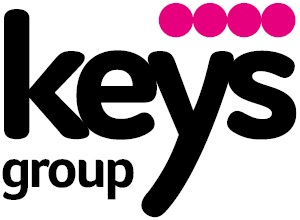Tips on writing a qualitative dissertation or thesis, from Braun & Clarke – Part 2

Here we delve in to qualitative-centric methodology, analysis, discussion and conclusions.
Part 1 of this blog covers qualitative centric writing, introductions and research questions.
Methodology
We prefer the title methodology – rather than method – for the section in which you discuss the rationale for your design choices and your procedures.
Methodology signals a theoretically-embedded research practice. To us, “method” evokes or allows a theoretically-divorced description of the tools used, and how they were used. Make sure you discuss your philosophical – ontological and epistemological – assumptions, even if only very briefly, ideally citing relevant references to anchor your definitions. This is especially important if you’re using reflexive TA as it’s a theoretically flexible method (or something close to a method), rather than a theoretically bound and delimited methodology.
Insiders, outsiders and reflexivity
Reflexivity is also a really important part of the methodology section. If you’re an insider researcher (a member of the group you are researching), take a dive into the methodological literature on insider researchers. This paper by Nikki Hayfield and Caroline Huxley is a great place to start exploring this literature. The insider/outsider dynamic is an excellent tool for getting into reflexivity, and thinking about how you as a researcher have (inadvertently) shaped your research.
Don’t think in terms of “bias” – which implies a distortion of objective knowledge and something ideally avoided. Think in terms of subjectivity – which we and many others identify as an inevitable component of qualitative research. Reflexivity is the practice that enables you to reflect on how you shaped your research. We say “how” – not whether – because you definitely did shape your research!
Sample or saturation?
Think carefully about using the concept of saturation to justify the size of your participant group or dataset. This is most often called a sample, language we’ve used a lot. But in our most recent writing, we try to avoid the term “sample” after a reviewer commented that this too is a hangover from quantitative research.
But why not saturation? Saturation is not a theoretically neutral concept – it is arguably underpinned by positivist and realist assumptions. We argue against its use as a criterion for determining the size of a dataset/participant group in reflexive TA. There are other good options out there such as information power.
Know your design choices and write about them
As a general good practice tip for writing your methodology… engage with the methodological literature related to your design choices – there will be some. For instance, instead of writing things like “I had to do video call interviews because of COVID”, draw on the video call interviews methodological literature to provide a more robust rationale for, and discussion of your use of, video call interviews.
Check out Collecting Qualitative Data – a book we edited with Debra Gray – for an excellent chapter on video call interviews by Paul Hanna and Shadreck Mwale.
You may have been encouraged to cite more than one source on TA – we often encounter students who have been told to not just cite Braun and Clarke. If so, proceed carefully. There is a wide variety of approaches to TA, with some characteristics in common, but also with some important differences in the conceptualisation of key constructs and analytic procedures.
The diversity within the TA family of methods is poorly understood – those recommending that students cite more than one source often don’t appreciate that diversity. Avoid mixing and matching incompatible approaches – our approach and that of Boyatzis are very different, for example. The paper we mentioned earlier – Conceptual and Design Thinking in Thematic Analysis – provides an introduction to the diversity across TA approaches.
Justifying your analytic method/ology on its own terms
Another piece of advice students are often given is to explain why they didn’t use other similar method/ologies as a way of providing a rationale for their choice of analytic approach. We don’t agree with that approach, in general. One risk is that you discuss implausible alternatives and/or the alternatives are not very well explained.
In a recent paper we compared and contrasted reflexive TA with other widely used qualitative approaches, such as interpretive phenomenological analysis and grounded theory, and discussed similarities and differences. The paper will help you to develop a robust rationale for your selected method/ology without having to deploy a “other method/ologies I considered and rejected” type approach. It will help you to understand what is distinctive about your method/ology and when it is an appropriate choice.
Write about what you actually did
If you use reflexive TA, don’t just provide a generic description of the process – the six phases. Instead, make sure you tell the reader what you actually did, how you actually engaged with the process. We should mention here as an aside that we have recently renamed the six phases, and explained our rationale for doing so, so you may like to demonstrate to the reader that you are up-to-date with developments in reflexive TA by using the latest iteration of the six phases. For a doctoral thesis, examiners knowledgeable about qualitative methods might expect this.
A final tip is to avoid quantitative style subheadings in this section – things like “materials” and “procedure” – and instead used subheadings more aligned with qualitative approaches. Subheadings like “interviews” (or “focus groups” or whatever method you use to collect data), “participants and recruitment”, “data analysis” and so on work better. And as a general rule, organise any subheadings and content so that you discuss rationale (why you did something) before implementation and practicalities (how you did something).
Analysis
We prefer the heading analysis rather than “findings” as the latter implies the researcher discovered their analysis – that themes (for instance) existed fully formed in the data and the researcher found and then exported them into their report.
You don’t need to aim for ‘surprise reveals’
Start this section with an overview of your analytic structure – such as with a simple list, table, or thematic map of themes. A problem we commonly encounter in a report is not really understanding what the themes are, or how the analysis will flow. An overview at the start solves this problem! Think of it as signposting for the reader. Remember, a qualitative centric report is not about big surprise reveals, so much as contextualised information and interpretation, so giving your reader signposting that helps them understand what you’ve done, really helps.
Some tips on reflexive TA especially:
Topic summaries vs themes
These interconnect to the practice of how the analysis has been done. If you’re using reflexive TA, it’s really important not to confuse topic summaries with themes. The former present summaries of what participant said in relation to a particular topic area (perhaps mapping closely onto a particular data collection question), whereas themes are patterns of shared meaning underpinned by central concept.
See Conceptual and Design Thinking for Thematic Analysis for a discussion of the differences between topic summaries and shared meaning themes. Avoid one-word theme names – such names aren’t very informative for the reader and can suggest topic summaries are being reported.
Theme levels
We generally advise against having lots of theme levels and subthemes. Keep in mind that themes are ideally complex, rich multifaceted stories – it’s difficult to report lots of them and do them justice (unless you have a luxuriously long word count).
Subthemes are useful to highlight a facet of the central concept of your theme, but a complex thematic structure is not in keeping with the ethos of reflexive TA. Other TA methods are better suited to this type of thematic structure such as template analysis or framework analysis.
Analysis and discussion – better off together or apart?
In a qualitative centric style of reporting, it’s normative to integrate or combine the “results and discussion”. This style of presenting an analysis seems to be particularly challenging for more positivist qualitative researchers (as noted earlier, we and our students are often asked to separate out the results and discussions). Having these sections separate suggests that it’s conceptually possible and practically and theoretically desirable to separate out “the results” and your interpretation of them. But for qualitative research embedded within qualitative values, that’s simply not the case, and can be questioned and challenged.
Moreover, integration allows you to contextualise your themes and analytic observations in relation to existing literature, to relevant theory and wider contexts, and to draw on existing literature and theory to deepen your analytic engagement with your data (can an existing study or a theoretical framework help you to really get to grips with an aspect of the data?).
Even in a dissertation/thesis with an integrated “results and discussion”, you will still need a general discussion/conclusion in which you reflect on your study and consider future research.
Qualitative-centric conclusions
This is the part of the report where researchers often note that they may have influenced the analysis because of their positioning or practices. As we mentioned earlier, it’s better to discuss and reflect on how you shaped your research rather than treat researcher influence as contamination.
Avoid evaluating qualitative research in quantitative terms
Another thing to avoid in this section is bemoaning the lack of generalisability of your small participant group or dataset. Bemoaning a lack of generalisability implicitly invokes a conceptualisation of generalisability as statistical probabilistic generalisability; it falls into the trap of evaluating qualitative research in quantitative terms. This paper by Brett Smith provides an excellent discussion of qualitative conceptualisations of generalisability.
Make ‘future research’ an evidence-based discussion
When you make suggestions for future research, don’t turn on the “random ideas generator”! Any suggestions you make should arise from your research – intriguing things that the data hinted at but you didn’t have enough or the right kind of data to fully explore; suggestions that could address the limitations of your study.
If you make the classic suggestion that similar research needs to be conducted with different groups of people, try to make this an evidence-based discussion rather than a generic point: explain why things might be different (and similar) for these groups. This paper on gay fathers gives you an idea of what this looks like in practice.
Finally, end your report with a conclusion that leaves the reader with a clear “take-home message” about your research. Don’t introduce new material in the conclusion!
Victoria Clarke and Virginia Braun’s forthcoming book is Thematic Analysis: A Practical Guide. They have websites on thematic analysis and the story completion method. You can find them both on Twitter – @drvicclarke and @ginnybraun – where they tweet regularly about qualitative research.




